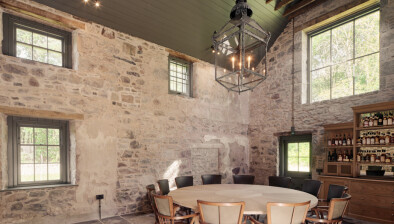Tender issued for contractors at £250m Sighthill transformation
 Glasgow City Council has issued a tender for lead contractors to progress the ‘Blue-Green’ infrastructure works at its £250 million transformation of Sighthill.
Glasgow City Council has issued a tender for lead contractors to progress the ‘Blue-Green’ infrastructure works at its £250 million transformation of Sighthill.
Comprising approximately 800 new homes, a new school campus and community facilities, as well as commercial units, the Sighthill regeneration infrastructure works have been integrated into the site thanks to a public realm design strategy developed by LDA Design alongside the council’s in-house masterplanning team.
The proposal incorporates Sustainable Urban Drainage solutions (SUDs) into the development, creating areas of new parkland, amenity and public realm spaces. These in turn offer opportunities for recreation and biodiversity, as well as a meaningful framework of spaces for ecology and education for both the local and regional community.
Kirstin Taylor, director at LDA Design, said: “The public realm strategy in this development is both highly sustainable and people centric. Our focus has been on the landscape and amenities, taking the emphasis away from vehicles and onto the community they will serve, and giving Sighthill a unique identity.
“We’re also proposing innovative green infrastructure solutions such as rain gardens within key streetscapes, right through to the design and specification of bespoke street furniture and dramatic gateway spaces. It’s exciting to watch the project progress and the tender announcement is the next step in this fantastic development becoming a reality for the city.”
Councillor George Redmond, chair of the Transforming Communities: Glasgow (TC:G), said: “The Sighthill masterplan will create a new identity for this part of Glasgow, providing new homes and business opportunities, alongside attractive public open spaces which both residents and visitors can enjoy. With better links to the city centre, we hope to entice people to the area and ultimately, unlock the potential in this part of Glasgow.”
In addition to ‘Blue-Green’ infrastructure, the public realm pushes the boundaries in other ways. Conventional road design is replaced by a civic boulevard, which creates a dynamic greenway, reducing the visual and physical impacts of traffic and delivering centralised public spaces, known as the ‘garden spine’.
There are also a series of ‘parkettes’ proposed along the boulevard strip to create points of interest along the route, including two recreational seating areas and spaces containing sculptural elements of incidental play. A pedestrian streetscape, known as the ‘civic spine’, acts as the primary pedestrian route through the centre of the development.

















